Mimicking Hair Disorders by Genetic Manipulation of Organ-Cultured Human Hair Follicles
October 2012
in “Journal of Investigative Dermatology”
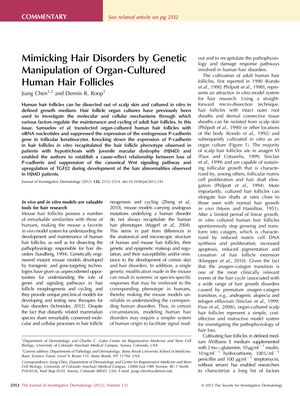
TLDR Scientists can mimic hair disorders by altering genes in lab-grown human hair follicles, but these follicles lack some features of natural ones.
In 2012, Samuelov et al. conducted a study using organ-cultured human hair follicles to replicate hair disorders. They suppressed the P-cadherin gene in follicular keratinocytes by transfecting the follicles with SiRNA nucleotides. This manipulation mirrored the hair follicle phenotype seen in patients with hypotrichosis with juvenile macular dystrophy (HJMD), establishing a link between loss of P-cadherin, suppression of the canonical Wnt signaling pathway, and upregulation of TGFB2. The study demonstrated the potential of using in vitro cultured human hair follicles to mimic genetic and phenotypic abnormalities seen in other human hair disorders. However, the researchers noted that organ-cultured hair follicles lack several features of in vivo hair follicles, such as a native vasculature system, neuro-endocrine supply, intact immunity, and influences of surrounding micro- and macro-environments and global regulators.
View this study on jidonline.org →
Cited in this study
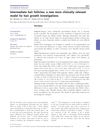
research Intermediate hair follicles: a new more clinically relevant model for hair growth investigations
Intermediate hair follicles are a better model for studying hair growth and testing hair loss treatments.
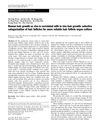
research Human hair growth ex vivo is correlated with in vivo hair growth: selective categorization of hair follicles for more reliable hair follicle organ culture
Choosing hair follicles at the same growth stage leads to more consistent hair growth experiments.

research Limitations of human occipital scalp hair follicle organ culture for studying the effects of minoxidil as a hair growth enhancer
Scalp hair follicle culture has limits for testing minoxidil's hair growth effects.
research Animal models and culture methods in the study of hair growth
The new microneedle method delivers hair loss treatment more effectively by enhancing growth pathways.

research The Biology of Hair Follicles
Hair follicle biology advancements may lead to better hair growth disorder treatments.
Related
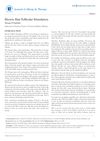
research Electric Hair Follicular Stimulation
Electric Follicle Stimulation may promote hair growth and density with no known side effects.
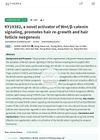
research KY19382, a novel activator of Wnt/β-catenin signaling, promotes hair re-growth and hair follicle neogenesis
KY19382 helps to regrow hair and create new hair follicles.
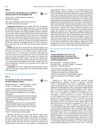
research Canonical Wnt-10b signaling exert an ability of maintaining mouse dermal papilla cells
Wnt-10b is important for keeping mouse skin cells healthy for hair growth.
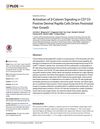
research Activation of β-Catenin Signaling in CD133-Positive Dermal Papilla Cells Drives Postnatal Hair Growth
Activating β-catenin in certain skin cells speeds up hair growth in mice.
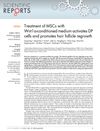
research Treatment of MSCs with Wnt1a-conditioned medium activates DP cells and promotes hair follicle regrowth
Wnt1a-conditioned medium from stem cells helps activate cells important for hair growth and can promote hair regrowth.

research Mimicking Hair Disorders by Genetic Manipulation of Organ-Cultured Human Hair Follicles
Scientists can mimic hair disorders by altering genes in lab-grown human hair follicles, but these follicles lack some features of natural ones.
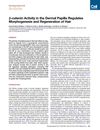
research β-catenin Activity in the Dermal Papilla Regulates Morphogenesis and Regeneration of Hair
β-catenin in the dermal papilla is crucial for normal hair growth and repair.
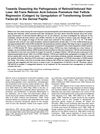
research Towards Dissecting the Pathogenesis of Retinoid-Induced Hair Loss: All-Trans Retinoic Acid Induces Premature Hair Follicle Regression (Catagen) by Upregulation of Transforming Growth Factor-β2 in the Dermal Papilla
All-trans retinoic acid causes hair loss by increasing TGF-β2 in hair follicle cells.